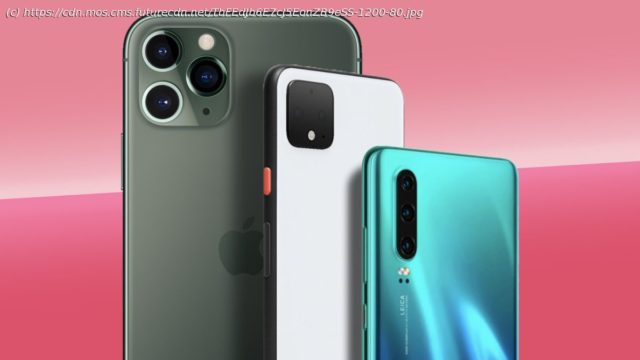These are the best camera phones money can buy
One of the core features you’ll likely want from a new smartphone is a powerful camera, and that’s why we’ve put together a list of the very best camera phones that money can buy.
At TechRadar we put smartphone cameras through rigorous testing in different lighting conditions, scenarios, and snap people, pets, plants and more to work out how each camera fares in the real world.
Beyond the specs and capabilities of the cameras, there are a number of aspects you’ll also want to consider. For example, getting a high-storage option or one that supports a microSD card will be helpful if you capture lots of 4K video, and flagging fundamental shortcomings like battery life so you don’t find yourself out of juice before the day is done.
So to help you, we’ve compiled this list of the best camera phones, that we’ve tested extensively, to help you when it comes to choosing your next camera phone.
Want to know more about dual-cameras? Check out our video above.
Release date: April 2020| Main camera: 50MP (f/1.9)| Telephoto: 12MP (f/3.4)| Ultra-wide: 40MP (f/1.8)| OIS: Yes| Front camera: 32MP| Weight: 209g| Dimensions: 158.2 x 72.6 x 9mm| Battery size: 4,200mAh| Max video quality: 4K 60fps| Storage: 128GB / 256GB / 512GB| Memory card slot: Yes
The Huawei P40 Pro is the best camera phone you can buy for under $1,000 / £900 it’s that simple. In fact, for a certain type of photographer – one who values a telephoto camera – it’s just the best camera phone around, period.
Recommending it comes with its own set of caveats given the Huawei/Google situation though. That’s why despite its extensive list of stellar features, you definitely need to read our P40 Pro review before picking one up. Irrespective of its software limitations though, its camera will knock your socks off.
The P40 Pro’s Leica-branded imaging system is spearheaded by a brand new 50MP sensor, which uses RYYB (red yellow blue) sub-pixel formation, like the 40MP P30 Pro before it. Huawei claims this makes its cameras better able to handle dark scenes like a champion, and we can attest to the fact the P40 Pro absolutely can.
The main camera’s lens is a pretty standard f/1.9 aperture on paper, but with a huge sensor size (for a smartphone) and OIS, combined with Huawei’s mighty electronic image stabilisation, it’s still a low light star. This phone can pretty much see in the dark, even in automatic mode – something no other non-Huawei phones can do.
There’s also a 40MP f/1.8 ultra-wide camera, a 12MP telephoto camera that’s capable of 5x optical zoom or 50x digital zoom, and a time-of-flight (ToF) sensor for creating bokeh effects.
Photos taken on the P40 Pro are high on detail and low on noise. Unlike Samsung, Huawei’s photos don’t look overly sharpened, and while they aren’t as natural and neutral as those taken on the Oppo Find X2 Pro, many will prefer Huawei’s comparatively punchy style.
As far as zoom goes, while the P40 Pro may not get quite as close as the Galaxy S20 Ultra, the phone costs a lot less, and more importantly, delivers more consistent image quality across its cameras.
The rest of the phone’s hardware is top-tier, it looks a treat and has plenty of power, so if (and only if) you’re comfortable with the Google-free software experience, the P40 Pro packs plenty to love.
Read more:Huawei P40 Pro review
Release date: September 2019| Main camera: 12MP (f/1.8)| Telephoto: 12MP (f/2.0)| Ultra-wide: 12MP (f/2.4)| OIS: Yes| Front camera: 12MP| Weight: 188g| Dimensions: 144 x 71.4 x 8.1mm| Battery size: 3,046mAh| Max video quality: 4K 60fps| Storage: 64GB / 256GB / 512GB| Memory card slot: No
The iPhone 11 Pro doesn’t just feature the best smartphone camera Apple’s ever made, it’s also the best camera phone money can buy for a certain type of user. It’s reliable – you take a shot and it’s likely going to be a good one, even in middling light. Dynamic range is strong, and with three cameras, it’s versatile too.
The primary camera features a 26mm focal length, perfect for grabbing everyday snaps. The ultra-wide camera takes a step back so you don’t have to, getting more in the frame with its 13mm focal length. As for the telephoto camera, as with the iPhone XS, it zooms into your subject with a 52mm focal length – perfect for portraits.
While there’s no manual mode and the 12MP resolution is meagre on paper compared to some of the competition, results still impress, and Apple has introduced a new night mode which can hold the shutter open for incredible low light photography.
This can’t beat the Astrophotography feature on the Pixels when steadied on a surface or a tripod, but handheld, it’s up there with the best of them.
Add to the mix a beautifully consistent color and tonal profile across all three cameras, and if you’re an Apple fan looking for a camera champ, this is as good as it gets.
Read our full iPhone 11 Pro review
Release date: October 2019| Main camera: 12.2MP (f/1.7)| Telephoto: 16MP (f/2.4)| Ultra-wide: None| OIS: Yes| Front camera: 8MP| Weight: 162g| Dimensions: 147.1 x 68.8 x 8.2mm| Battery size: 2,800mAh| Max video quality: 4K 30fps| Storage: 64GB / 128GB| Memory card slot: No
The Pixel 4 is probably the most mixed bag in our list; on the one hand, it’s a fantastic camera phone with capabilities even DSLR users can only dream of, made possible by the almost 5-minute long-exposure Astrophotography mode. On the other hand, however, it’s a pricey flagship with poor battery life and no ultra-wide camera.
If you’re thinking about picking one up, therefore, we’d urge you to go for the Pixel 4 XL if you hope to make it through a full day as this bigger Pixel 4 lasts that bit longer.
Both phones have the same excellent dual-camera, and it’s a corker. Despite its main sensor being just 12.2MP, similar to the iPhone 11 Pro, it grabs beautifully balanced pictures almost every time.
The Pixel 4s also introduce a handy exposure control when taking a shot, so you can boost shadows separately to overall brightness, ensuring detail pops even in darker spots and can stay tapered in highlights.






